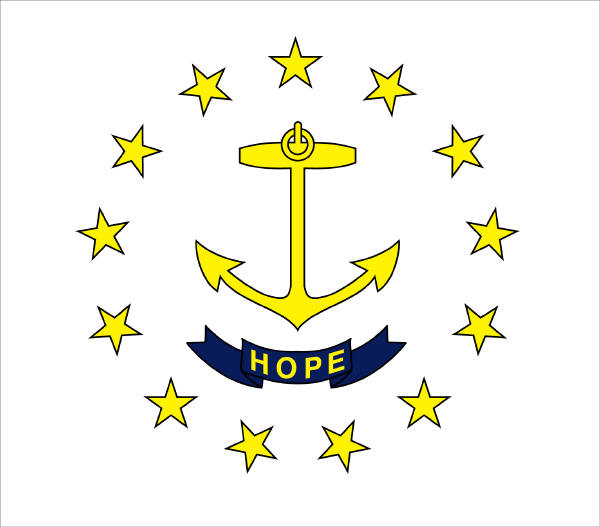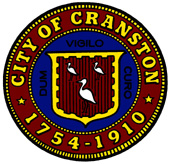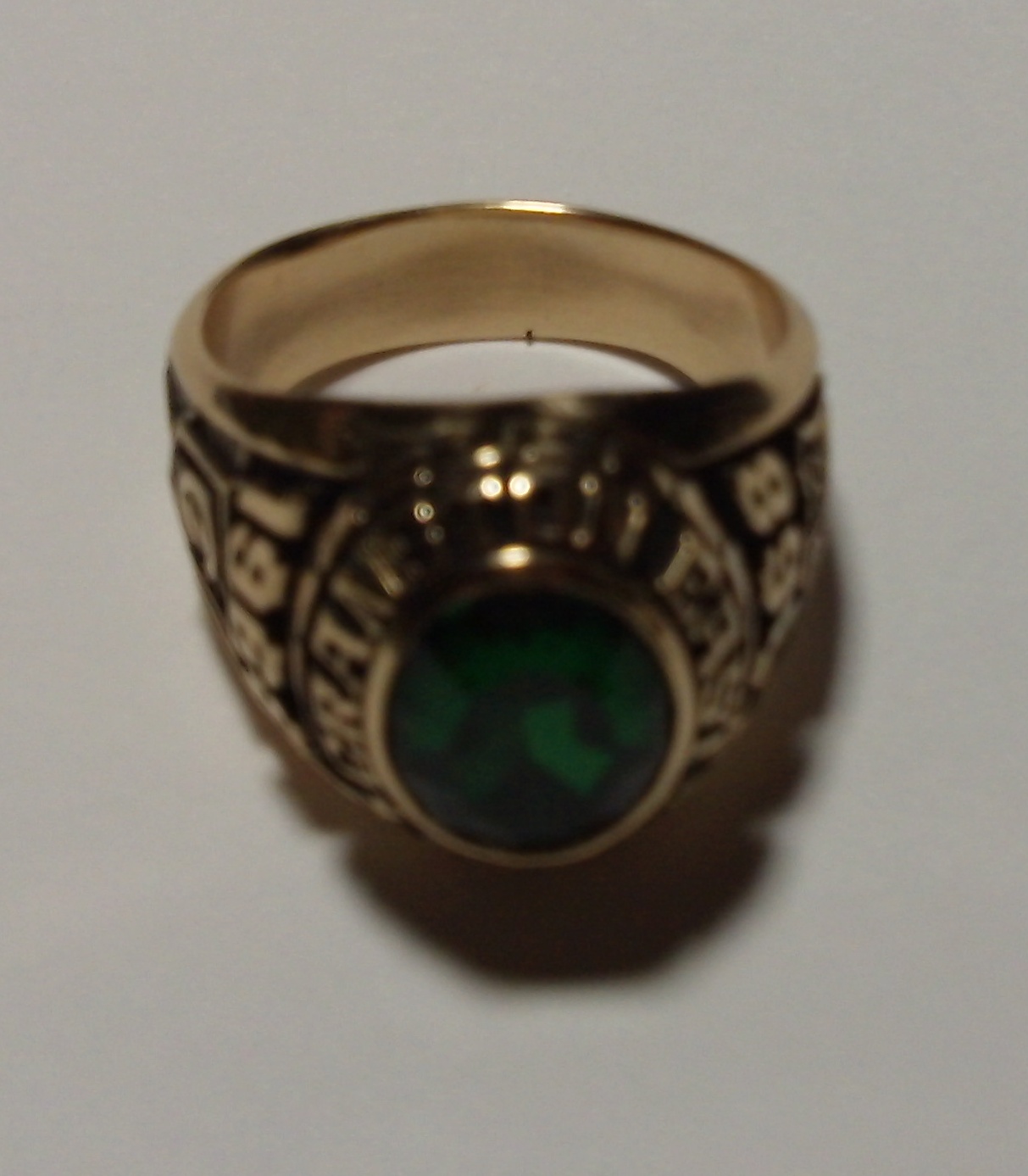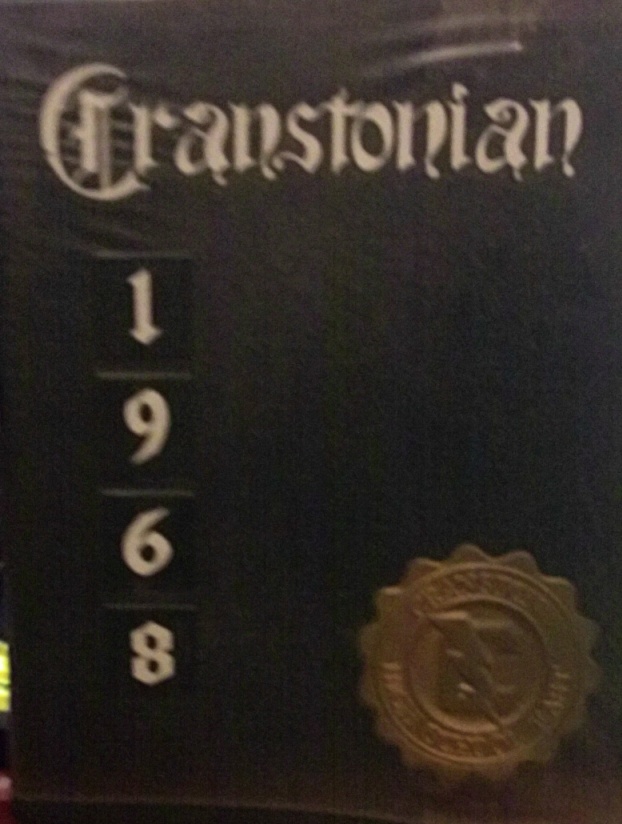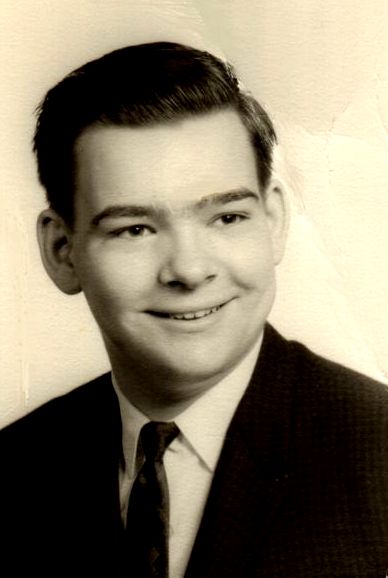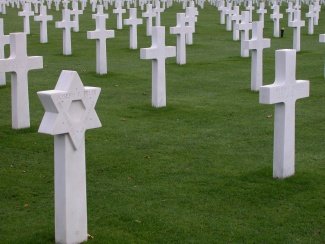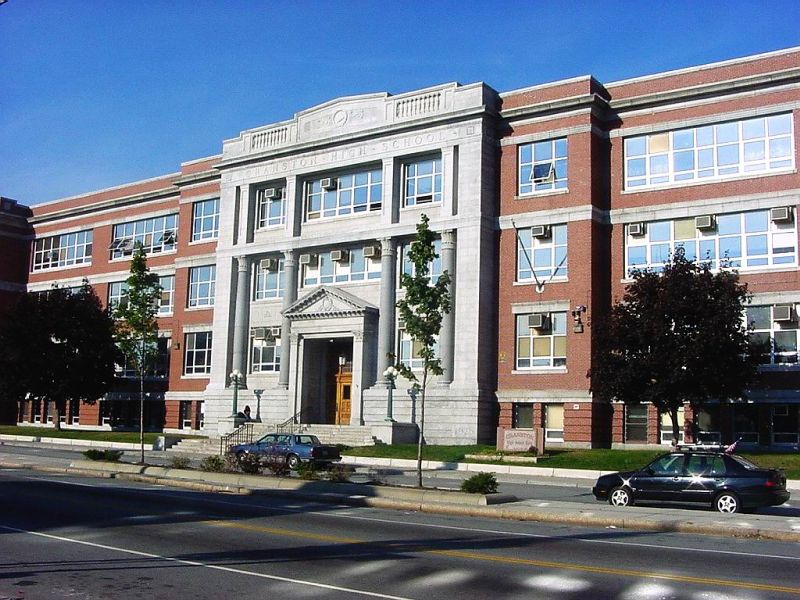
Cranston High School East, 899 Park Avenue, Cranston, R.I. USA
The song "Porch Swing Days" written and performed by Kevin MacLeod and is used unter the terms of a Creative Commons License from www.incompetech.com Reuse permitted under the terms of said license.
Fifty Years of Historical Preservation
May 26, 1949-May 26, 1999
Welcome to the reading room
............................................
Here from time to time you will find articles and stories written about Cranston for Cranston residents. We invite our friends to submit their stories about Cranston. We will not accept anything in bad taste or slanderous.
............................................
HISTORY LESSONS TAUGHT IN HISTORICAL CRANSTON SCHOOLS
By: Meri R. Kennedy
Cranston, Rhode Island
August 19, 1999
Travel back in time to the first school appropriation voted on and recorded by Cranston officials in the amount of $500 in 1833. From there, travel ahead to 1865, just three decades later, and witness the growth of the school system. In 1865, the city consisted of 11-school districts that were run by Trustees and had an enrollment of 1,058 students. Cranston students attended school in the spring, summer (with a six-week vacation), fall and winter. Superintendent, William A. Mowry earned a "generous" $200 per year salary. The school budget for that year was "not far short of $13,000, which is $12.28 to each pupil" per school year.
This school year (1999-2000), the Cranston public schools will operate on a budget of $82,192,370 with enrollment, as of June 4, 1999, at 10,714 students and a superintendent's salary of $92,811 per year. The average expenditure per pupil cost per year during the 1998 school year reached $7,382.54 (grades 1-12); $3,691.27 (kindergarten); and $20,636 per special need student.
The school system, however, is far richer in history then budget, enrollment and salary figures.
While taking the trip into the historical past of the public schools it becomes evident that many of the school names were dedicated to areas within the boundaries of Cranston. Cranstonians, as they still do today, often identified themselves by the section of city they came from like Western Cranston, Edgewood, Arlington, Oaklawn and Norwood. The original Cranston school committee, elected on June 2, 1828 contained the popular surnames in the city, like Dyer, Knight, Waterman, Lippitt, Aldrich, Potter, and Howard.
Many school names like Norwood Avenue, Garden City, Glen Hills, Oaklawn, Stadium, Stonehill, Edgewood Highlands, Gladstone, Hope Highlands, and Woodridge, are pretty much descriptions of the are the individual school was built.
Several schools in Cranston are not on the original land they were first built on. Eden Park Elementary, for example, was located further up on Chestnut Avenue in more of a park environment. The naming of this particular school could have come from its area and its beauty compared to the 'Garden of Eden'. Rumor also has it also that the area was heavily populated by Swedish families in the 1800s-1900s and nicknamed 'Sweden Park'.
Three other elementary schools, Norwood Avenue, Stadium, and Oaklawn, were also named respectively for a street, a location, and a section of the city. Two out of the three middle schools were also named in similar fashion. Park View due to its location so close to Roger Williams Park and Western Hills from its location in that section of the city and its placement on the campus of Cranston High School West.
In earlier days, any student in Cranston who wished to receive a high school education was sent to Providence. In 1891, Providence decided to accept only residents in their high schools and Cranston soon opened a room for high school work at the Arlington, Auburn and Edgewood schools.
In 1865, Superintendent Mowry wrote in his report on the schools that "it is greatly desired that the grade of our schools be so elevated, that, at as early a day as practicable, a High School may be established in this town." This was not realized though until 1892.
The first high school in Cranston existed in an old grammar school at the corner of Wellington Avenue and Cross Street, the current location of the Central Tool Company.
In 1903, the school budget included an additional $50,000 for the building of a new high school, located at the corner of Park and Pontiac. This was built and named in honor of William A. Briggs, a former superintendent who served for nine years.
Cranston High School East, as it is known today, was realized in 1925 and the Briggs Building is now the home of the school administration and shared also by some East classrooms.
Several Cranston schools did indeed represent and serve as testimonials to prominent Cranstonians. George J. Peters was a private in the Army who received the Congressional Medal of Honor. He was born in Knightsville and died in combat in 1945.
The Westview Elementary school was first named in his memory (which was located just blocks away from his Elmhurst Avenue residence). Today, the school is called the George J. Peter's Elementary School, visible on Atwood Avenue and located behind the Cranston Police Department.
Travelling further up east on Park Avenue is the school where current school committee meetings are held. The Horton Elementary School was named for Horace Francis Horton who represented Cranston in the Rhode Island House of Representatives (1900-1902) and the State Senate (1902-1905).
Visible from Horton Elementary on Park Avenue is Bain Middle School on Gansett Avenue that sits in tribute to a man's whose life began in Columbia, Colorado. Hugh B. Bain did not start his life in Cranston but came to the city in 1880 and established himself in his own real estate business. He did not take long to begin his life in community service, first in 1893 as a state senator and then 18 years in the Office of Town Treasurer. He was the Chairman of the Cranston School Committee during the years of 1890-1902, serving as Chairman throughout his career until his death in 1902.
Continue east on Park Avenue until it meets with Pontiac to find a school tucked away in a quiet neighborhood and named for a leading businessman who made his way in the jewelry manufacturing industry. William Russell Dutemple was a member of the Cranston School Committee for 12 years, succeeding the late Hugh B. Bain as Chairman in 1902, and served as Chairman of the Committee in 1902-1914.
Further south on Pontiac Avenue is the Daniel D. Waterman Elementary School. Waterman, a 10th generation of one of the oldest of four family names in Rhode Island, served as Town Clerk from 1886 until his death in 1905.
Return to Park Avenue and head east to Roger Williams Park where there is a school named for a man who was born in Woonsocket and served as an Associate Justice of the Rhode Island Supreme Court. Chester Willard Barrows was honored first by the elementary school then known as Beachmont Avenue School. The Chester W. Barrows elementary school today sits in his memory.
Venture further east on Park Avenue, past Edgewood and into Pawtuxet, to find the well-known Cranston name of Rhodes. The Rhodes Elementary School pays tribute to the accomplishments of Edward S. Rhodes. Edward and his brothers, Thomas H. and Arthur A., established the Rhodes Brothers who were responsible for the Rhodes Pavilion on Pawtuxet Avenue (Rhodes-On-The Pawtuxet). The three sons of Thomas Rhodes represented the 10th generation of the Rhodes family, direct descendents of Zechariah Rhodes, who was one of the first settlers in Pawtuxet in 1643.
It appears that the Cranston schools have been aptly named for accomplished citizens, various scenic environments in which they were built and descriptive sections of the city. One may pause and wonder just who or what the next school building will be named for?
Today, while debates continue on the development of a new school in western Cranston and maintenance of current school buildings - a special history can be found in the naming of Cranston schools. The schools are as in rich in history as the history lessons taught inside of them.
Article Printed In The August 19, 1999 Cranston Herald Meri R. Kennedy Sources: Research conducted at the Cranston Public Library, assistance provided by the Cranston Historical Society "School Report" Cranston, 1865, William Mowry, Superintendent of Schools, Cranston, Rhode Island, Statewide Historical Preservation Report P-C-1" by The Rhode Island Historical Preservation Commission, September, 1980; "Cranston Schools: Names in History, Names in Stone" paper submitted by Patricia A. DiPrete, Roger Williams University, Foundations in Education, June, 19, 1995; "A History Of Cranston", student thesis, by Frank Tanzi, June, 1953; "Representative Men And Old Families Of Rhode Island" Volumes I, II, J.H. Beers & Co., Chicago, 1908.
Created 8/16/2011
Text is © Meri R Kennedy © www.oocities.org
